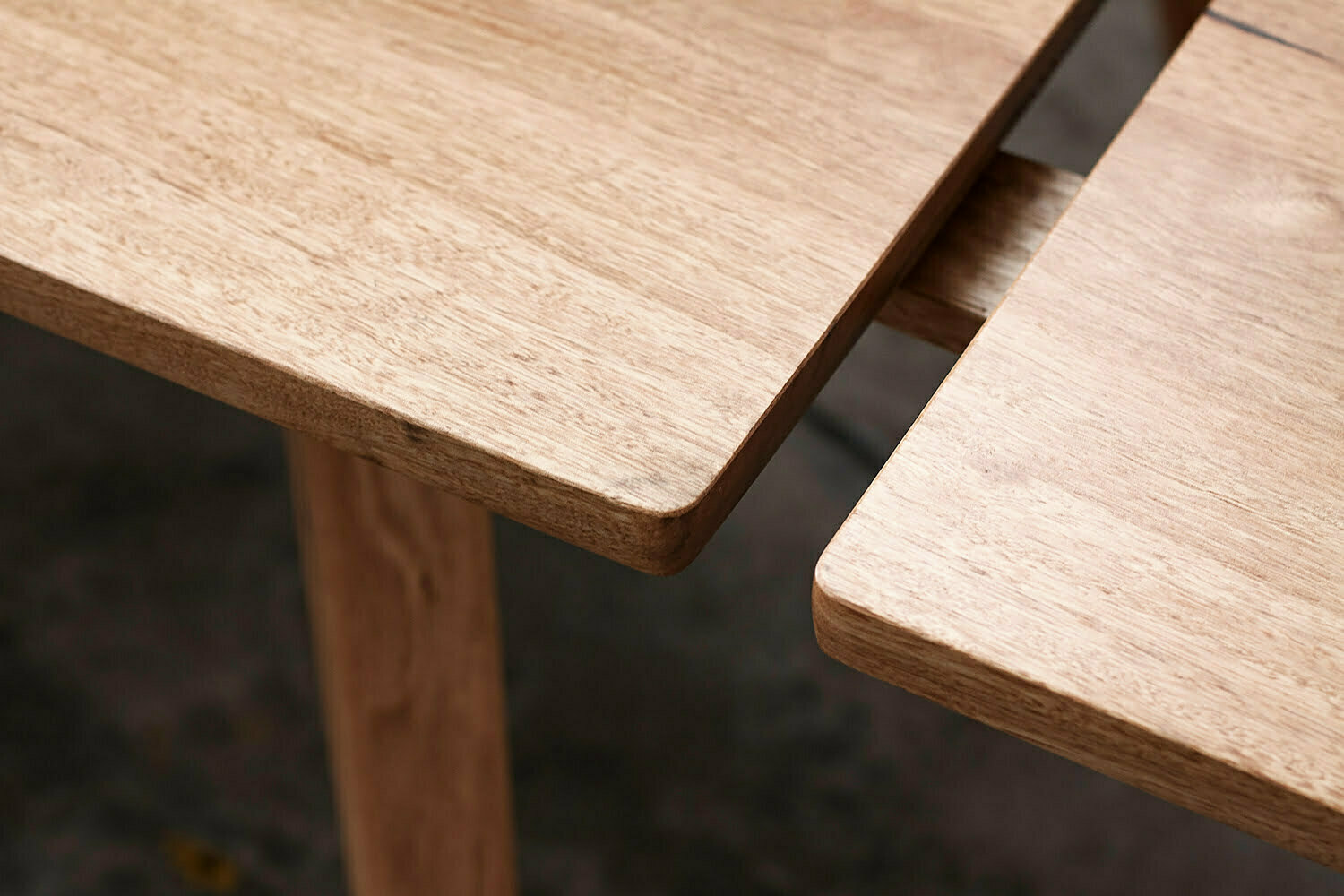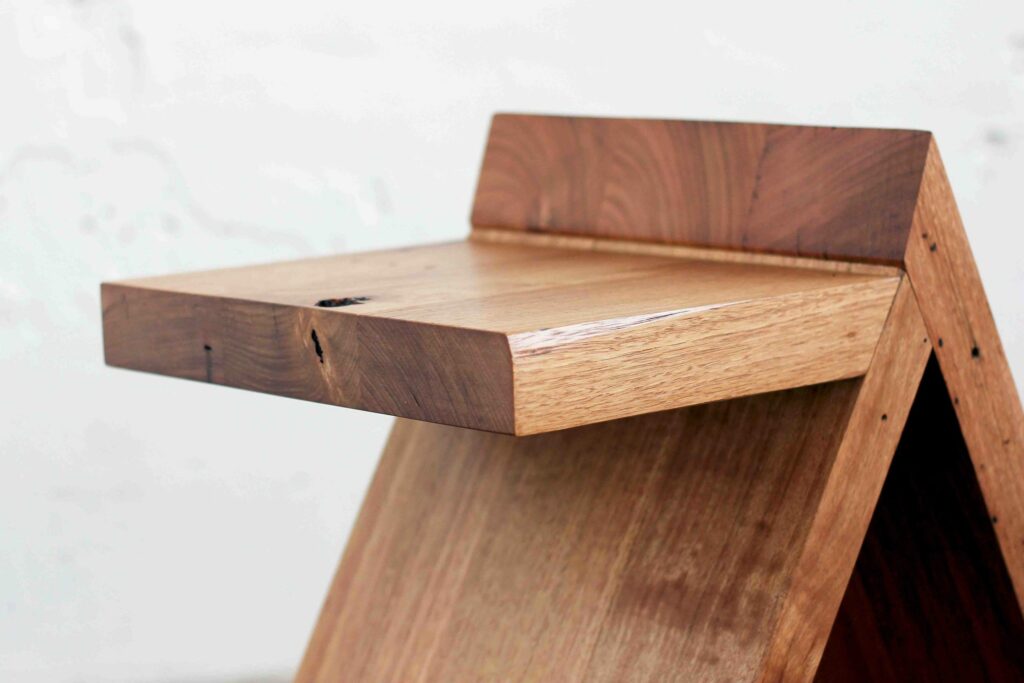How to care for recycled timber furniture
The beauty of working with reclaimed timbers is the life they’ve had prior to being turned into our furniture. We work with Australian timbers that date anywhere from 30 to 150 years old.
Your YARD Furniture piece is made and designed to last a lifetime, and if cared for properly, it will do just that.
One of the questions we’re frequently asked is how to care for recycled and reclaimed timber furniture.
We’ve put together a brief guide for how to care for your YARD pieces, as well as other furniture pieces- from dining tables to bathroom vanities, and how to maintain the timber and hardwax finish over time.

Know what you're working with
We use a hardwax oil called Osmo Poly-X oil to finish our pieces.
Poly-X includes linseed, sunflower and thistle oil. It is classified food safe when dry and used for both furniture and flooring.
Hardwax is increasing in popularity because brings out the natural features in timbers beautifully, is an eco friendly product, and is also easy to care for throughout the lifetime of the furniture piece.
How to care for your YARD Furniture piece
Keeping it simple is the best approach to looking after a piece finished with hardwax oil.
Ensuring the timber is kept dry and maintaining the wax layer will mean your furniture piece looks great over time.
When your furniture first arrives home it’s important to take some additional care while the Osmo is still in its curing process.
Avoid placing hot items like oven trays or casserole dishes directly on surfaces, and take care with abrasive objects like pottery when placing on surfaces.
Cleaning
General Cleaning
Using a damp cloth, followed by a dry cloth to clean any spills on an Osmo finish is suffice in most instances. Ensure the timber is completely dry after cleaning and don’t leave the timber damp or wet.
If you prefer to use a cleaning product, use a gentle cleaner only. Avoid using alcohol or solvent based cleaners as these will damage the finish.
Osmo have a cleaning product Osmo Interior Spray Cleaner which has been designed for use with Osmo products and can be found through Osmo stockists.
Maintenance
Every 12-18 months a Liquid Wax Cleaner can be used to rejuvenate your furniture piece and will address light scratches, light wear and some stains.
Liquid Wax Cleaner can be buffed in by hand using a soft lint free cloth.
A high traffic piece like a dining table or vanity may require more frequent maintenance than an entertainment unit or bed head.
naturaltimberoils.com.au/timber-oils/brands/osmo-maintenance-products/liquid-wax-cleaner/
Repairs
One of the benefits of finishing a piece of furniture with hardwax oil is the ability to spot treat areas that are scratched- without having to refinish the entire piece of furniture like traditional varnish.
The best part is it’s DIY friendly.
The Osmo Australia website has a short video to demonstrate the technique for repairing a deep scratch.
As PolyX oil is designed for both floors and furniture pieces the example of a floor is shown, however the technique also applies to furniture pieces.
osmoaustralia.com.au/learn/how-to-videos/
Natural timber Oils are a stockist for Osmo, and can assist with answering questions around repairs.
Maintenance tips for specific pieces
Avoid placing hot objects like pots and cooking items directly onto timber surfaces. They can burn the timber and damage the finish. Mugs and plates are safe to place directly on tables, however if you want to increase the longevity placemats are recommended.
Take care to not let water pool on bathroom vanities for too long which can cause water damage, and is generally not covered under warranties. Try to wipe spills and water immediately followed by a dry cloth.
Wiping down vanities with a damp cloth, followed by a dry cloth is recommended for general cleaning, while using a specialised cleaning product (Osmo Interior Spray Cleaner if your vanity is finished in Osmo) is recommended if you’re wanting to clean and also protect the surface.

Other things to consider
Heat/Air Conditioning, Moisture & Dryness
Timber is a natural product that expands and contracts over its lifetime.
Placing it directly in front of heating or cooling systems can shrink glues and draw moisture from the timber which causes it to move and shrink.
Where possible, try to place your furniture away with some distance from a heating cooling sources.
Direct Sunlight
Long periods of direct sunlight will naturally alter the tones of timber. Different timbers respond to UV (ultra violet rays) differently, even if they receive the same amount of light.
The positioning of your furniture piece is something to keep in mind if you have spaces that receive long periods of intense afternoon sunlight.
UV, along with the timber’s environment plays a role in what’s called the ‘yellowing off’ of timber.
All timber, regardless of tone or finish will yellow off over time. Lighter timbers will develop warmer tones while darker timbers will deepen and develop richer tones.
It’s also important to note there is a difference between hardwax and traditional varnish finishes i the role of yellowing off.
Because timber is a living, breathing material it will change over its lifetime.
Considering its placement in relation to heat, cooling and sunlight to attempt to give it a consistent environment is a good step to managing how your furniture piece ages.




